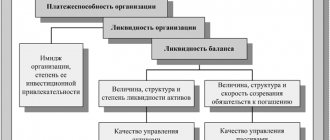Recipients of the bonus
For employees working in the Far North and equivalent areas, receive additional payments to their salaries:
- bonuses for length of service;
- regional coefficients.
The right to receive an allowance for work in the northern regions is enshrined in Article 317 of the Labor Code of the Russian Federation and Article 11 of Law No. 4520-1 of February 19, 1993. To the extent that it does not contradict these documents, the regulations of the USSR are still in force, explaining the procedure for calculating bonuses (orders of the Ministry of Labor of the RSFSR dated November 22, 1990 No. 2, No. 3, etc.).
In addition to employees who constantly work in the regions of the Far North (and equivalent areas), employees who periodically work in the North on a rotational basis also have the right to receive a percentage increase (Article 302 of the Labor Code of the Russian Federation). Employees sent to the northern regions on a business trip are not entitled to a percentage increase (clauses 3 and 4 of the Instruction, approved by order of the Ministry of Labor of the RSFSR dated November 22, 1990 No. 2).
The need to charge allowances does not depend on the location of the organization itself. For example, an organization located in Moscow and which has entered into an employment contract with a home worker from Murmansk (a region of the Far North) is obliged to provide such an employee with all allowances established by law for work in the northern regions. Such clarifications are contained in the letter of the Ministry of Finance of Russia dated November 13, 2010 No. 03-03-07/39.
Legislative regulation of the issue
To date, a single regulatory document has not been adopted, which includes instructions, guidelines for action and regulations on the calculation of the northern bonus for employees of enterprises located in difficult climatic conditions.
In order to determine the percentage and procedure for assigning additional payments, it is necessary to study several legislative acts or even refer to those that were adopted during the existence of the Soviet Union.
For example, Articles 129 and 136 of the Labor Code of the Russian Federation state that a person whose work takes place in non-standard conditions has the right to apply for compensation payments.
List of regions
The list of territories belonging to the regions of the Far North and equivalent areas is given in Resolution of the Council of Ministers of the USSR dated November 10, 1967 No. 1029. From January 1, 2008, they also include the city of republican significance of Pechora and the village of Ust-Lyzha with its subordinate territory (Komi Republic) (RF Government Decree of April 24, 2007 No. 245).
In addition to the regions of the Far North and equivalent areas, a percentage increase for employees working in these areas is also paid in other northern regions.
Amount of allowance
The amount of the percentage bonus to wages for work in the Far North depends on the region in which the employee works, the employee’s age and the duration of his work (residence) in this region (clause 16 of the Instruction, approved by order of the Ministry of Labor of the RSFSR dated November 22, 1990 No. 2, clause 6 of the Instruction, approved by order of the Ministry of Labor of the RSFSR dated November 22, 1990 No. 3, order of the Government of the RSFSR dated December 26, 1991 No. 199-r).
For example, in the Far North regions no bonus is paid during the first six months of work. In areas equated to the regions of the Far North, salary bonuses begin to be paid after a year of work (clause 16 of the Instruction, approved by order of the Ministry of Labor of the RSFSR dated November 22, 1990 No. 2). For more information about the amounts of percentage allowances, see the table.
Employees under 30 years of age are entitled to an increased bonus. However, in order to take advantage of the increased percentage increase, they need to live in the corresponding region for at least one year (clause 16 of the Instruction, approved by order of the Ministry of Labor of the RSFSR dated November 22, 1990 No. 2).
In addition to the region, percentage increases depend on length of service (Article 317 of the Labor Code of the Russian Federation). The length of service giving the right to receive bonuses is determined in calendar days of work in the relevant region on an accrual basis. In case of breaks in work, the length of service is maintained regardless of the timing of such breaks (clause 1 of the Decree of the Government of the Russian Federation of October 7, 1993 No. 1012). The duration of continuous work experience to receive a percentage increase is determined by the work book or by certificates issued by organizations (clause 33 of the Instructions approved by order of the Ministry of Labor of the RSFSR dated November 22, 1990 No. 2, clause 28 of the Instructions approved by order of the Ministry of Labor of the RSFSR dated November 22, 1990 . No. 3).
For shift workers working in the Far North and equivalent areas, the length of service includes:
- actual time (calendar days) of the shift in the regions of the Far North and areas equivalent to them;
- actual days of travel (provided for by the shift work schedule) from the gathering place (location of the work organizer's organization) to the place of work and back.
Such rules are established in Article 302 of the Labor Code of the Russian Federation.
Situation: in what cases is an employee’s work experience interrupted for the purpose of calculating the northern bonus?
The general rule for calculating the length of service giving the right to a northern bonus is given in Resolution of the Council of Ministers - Government of the Russian Federation dated October 7, 1993 No. 1012. This document states that the length of service giving an employee the right to receive a percentage increase in salary is summed up regardless of the timing a break in work and reasons for terminating the employment relationship, with the exception of dismissal for guilty actions.
The list of cases of dismissal for guilty actions, as a result of which the length of service is interrupted, is given in paragraph 27 of the Instruction, approved by order of the Ministry of Labor of the RSFSR dated November 22, 1990 No. 2, and paragraph 19 of the Instruction approved by order of the Ministry of Labor of the RSFSR dated November 22, 1990 No. 3.
However, these rules have now been revised. In the decision of June 10, 2009 No. GKPI09-536 and in the rulings of August 3, 2006 No. GKPI06-823, of June 7, 2006 No. GKPI06-526 and of December 23, 2004 No. KAS04-596 Supreme Court of the Russian Federation concluded that dismissal for guilty actions is not grounds for a break in service.
Formally, the court canceled only subparagraphs “b”, “c”, “d”, “e”, “i”, “j” of paragraph 27 of the Instruction, approved by order of the Ministry of Labor of the RSFSR of November 22, 1990 No. 2 (since it was them that the applicant protested ). However, the norms of the current legislation allow us to conclude that all other provisions of paragraph 27 of the Instruction, approved by order of the Ministry of Labor of the RSFSR dated November 22, 1990 No. 2, and paragraph 19 of the Instruction approved by order of the Ministry of Labor of the RSFSR dated November 22, 1990 No. 3, do not apply .
This is due to the fact that in the Labor Code of the Russian Federation the right to receive a bonus is made dependent on length of service in the Far North and equivalent areas, and not on the reasons for dismissal (Article 317 of the Labor Code of the Russian Federation). Therefore, all norms of acts of the USSR that contradict this requirement do not apply (Article 423 of the Labor Code of the Russian Federation).
Legal grounds for calculating the regional coefficient
Calculation of allowance
The district-type coefficient is a type of increase for employees who are in difficult climatic conditions. Typically, such coefficients are in the range of 1.15-2.0. It all depends on how difficult the working conditions are. Taking into account coefficients is mandatory when determining wages. The location of the management does not matter.
Criminal, financial and administrative liability - these are the various types of punishments for those who evade the application of coefficients.
Establishing a procedure for calculating regional coefficients and other allowances is the direct responsibility of the Russian government. The workplace at the address does not necessarily have to coincide with the location of the structural unit or facility where the enterprise operates. The coefficients apply to employees from the moment the contract is concluded until dismissal.
The coefficient will not be awarded to those who are sent on a business trip to the Far North or places with a similar value. With the main place of work, which is located in other regions.
Remuneration is not associated with maximum size restrictions, therefore the coefficient is added to the entire amount. The use of the indicator does not lead to the appearance of tariff rates with salaries.
Industry agreements
Special rules for calculating percentage bonuses to wages for work in the Far North can be established in industry agreements. However, such agreements are binding for commercial organizations only if they join them (Article 48 of the Labor Code of the Russian Federation). For example, employees in the coal industry under 30 years of age are entitled to a preferential procedure for calculating bonuses. Unlike the general procedure, they have the right to a bonus from the first day of work. However, to do this, such employees must have lived in the Far North (equivalent areas) for at least five years. This is stated in paragraph 3.2.9 of the Industry Agreement on the coal industry for the period from April 1, 2013 to March 31, 2016. This agreement is binding only for those organizations that have joined it (clause 1.4 of the Industry Agreement on the Coal Industry for the period from April 1, 2013 to March 31, 2016). In this case, organizations of the coal industry are considered to have acceded to the agreement if, within 30 calendar days from the date of its publication, they have not sent a reasoned refusal to accede to the agreement to the Ministry of Labor of Russia (letter of the Ministry of Labor of Russia dated June 26, 2013 No. 14-4/10/2- 3480).
Maximum allowance amount
When calculating a percentage increase in wages for work in the Far North at an increased rate, observe the general restriction on its maximum amount in this region. That is, in the regions of the Far North, a bonus of more than 100 or 80 percent of earnings cannot be charged. And in areas equated to the regions of the Far North - more than 50 percent (for more details, see the table).
Such rules are provided for in paragraph 16 of the Instruction, approved by order of the Ministry of Labor of the RSFSR dated November 22, 1990 No. 2, and paragraph 6 of the Instruction approved by order of the Ministry of Labor of the RSFSR dated November 22, 1990 No. 3.
Difference between coefficients and premiums
Before considering the essence of such compensation as the northern coefficient and how it is calculated, it will be useful to study its main differences from allowances. What are they?
First of all, it is worth noting that the northern bonus is understood as an amount calculated as a percentage of a person’s salary. It is guaranteed by law only if the person has sufficient experience. Simply coming to the North or another area where there are bonuses and starting to work there is not enough. A certain amount of time must pass. Later in the article we will study in more detail what the length of service requirements are from the point of view of the possibility of receiving northern bonuses.
The regional coefficient in the North is calculated in whole numbers or added tenths - a person’s salary is multiplied by it. This additional payment, in turn, is guaranteed by law for any length of service - just start working in the North. It can be noted that regional coefficients are established not only for the northern territories, but also for other regions characterized by a difficult climate. Later in the article we will also study the specifics of the corresponding compensation in more detail.
In some cases, northern coefficients and allowances are regulated by regional regulations, as well as local regulations in force in specific organizations. The type of financial support under consideration is intended to compensate residents of the North of the Russian Federation for difficult working conditions from a climate point of view, which in many cases require greater productivity and effort and cause an increased load on the working person’s body.
We noted above that in the USSR, coefficients and bonuses were established in order to attract qualified specialists to develop the North. Today, the purpose of the corresponding additional payments, in principle, remains the same. But there is also a point of view according to which a citizen who receives northern coefficients and allowances will be able to spend them on a more balanced diet, and also use them to organize trips to health resorts in the south and other regions, or abroad during vacation.
The procedure for calculating the allowance
The salary bonus for work in the Far North is calculated from the day the employee becomes entitled to it. For part-time employees working in the organization, accrue percentage bonuses for length of service in the Far North regions in the same way as other employees (Part 3 of Article 285 of the Labor Code of the Russian Federation).
Calculate the bonus on the employee’s actual earnings (clause 1 of the clarification approved by Resolution of the Ministry of Labor of Russia dated September 11, 1995 No. 49). Do not apply a surcharge:
- to the regional coefficient;
- for payments based on average earnings (for example, vacation pay, payment for business trips, etc.);
- for financial assistance;
- for payments that are of a one-time incentive nature and not determined by the remuneration system (bonuses for anniversaries, holidays, etc.).
This approach is confirmed by paragraph 19 of the Instruction, approved by order of the Ministry of Labor of the RSFSR dated November 22, 1990 No. 2, and by the decision of the Supreme Court of the Russian Federation dated December 1, 2020 No. AKPI15-1253.
If bonuses are paid based on the results of work for any period, the amount of this bonus for calculating bonuses is distributed over the months of the reporting period in proportion to the time worked. This distribution is necessary for the correct calculation of the northern bonus on the premium amount. When calculating a bonus on the bonus amount for a quarter, half a year, etc., be guided by the following. Apply the amount of the premium that is established for the month of the reporting period to which the premium amount relates.
This is established by paragraph 19 of the Instruction, approved by order of the Ministry of Labor of the RSFSR dated November 22, 1990 No. 2, and paragraph 7 of the Instruction approved by order of the Ministry of Labor of the RSFSR dated November 22, 1990 No. 3.
Situation: how to calculate the bonus for working in the Far North for a quarterly bonus? The bonus does not depend on the time worked. The employee had business trips during the quarter.
To calculate the bonus, distribute the quarterly bonus for each month in proportion to the time worked in that month. This is stated in paragraph 19 of the Instruction, approved by order of the Ministry of Labor of the RSFSR dated November 22, 1990 No. 2, and paragraph 7 of the Instruction approved by order of the Ministry of Labor of the RSFSR dated November 22, 1990 No. 3.
In the number of days worked, include days of business trips, if this is provided for by a local act of the organization (for example, Regulations on Business Travel). After all, being on a business trip is working time (Articles 91 and 166 of the Labor Code of the Russian Federation).
An example of calculating a bonus for working in the Far North for a quarterly bonus. During the quarter for which the bonus was accrued, the employee had business trips
The Alpha organization is located in Murmansk (a region of the Far North).
I.A. Ivanov (b. 1978) has been working at Alpha since June 1, 2020. His salary is 20,000 rubles. Ivanov’s bonus, taking into account his length of service, is 10 percent. From December 1, 2020, the bonus based on length of service is 20 percent.
In December 2020, Ivanov was awarded a bonus for the fourth quarter of 2015 in the amount of 30,000 rubles. From October 5 to October 9, Ivanov was on a business trip. The salary for the business trip based on average earnings was 4597.70 rubles. Payment for the remaining working days of October amounted to 15,454.53 rubles.
To calculate the regional allowance, the accountant determined the amount of time worked in each month, while, according to the Regulations on business trips, business trip days are not excluded from working hours:
- October – 22 working days;
- November – 20 working days;
- December – 23 working days.
Next, the accountant distributed the bonus by month:
- 30,000 rub. × 22 days : 65 days = 10,153.85 rub. – for October;
- 30,000 rub. × 20 days : 65 days = 9230.77 rub. – for November;
- 30,000 rub. × 23 days : 65 days = 10,615.38 rub. - for December.
Having distributed the bonus by month, the accountant calculated a percentage premium in the following amounts:
- for the part of the premium falling on October - 1015.39 rubles. (RUB 10,153.85 × 10%);
- for the part of the premium falling on November - 923.08 rubles. (RUB 9,230.77 × 10%);
- for the part of the premium falling on December - 2123.08 rubles. (RUB 10,615.38 × 20%).
An example of calculating an allowance for work experience in the Far North. The employee got a job in the middle of the month
Alpha LLC is located in Murmansk (region of the Far North).
E.V. Ivanova got a job as a secretary at Alpha on January 21, 2015. Before this, she had no work experience in the Far North (or equivalent areas). The employee's salary is 13,000 rubles. Ivanova became eligible for the first increase of 10 percent on July 21, 2020.
July 2020 Ivanova worked completely. For this month she was accrued:
- salary of 13,000 rubles;
- additional payment for combining positions in the amount of 1600 rubles;
- regional coefficient in the amount of 10,400 rubles;
- a one-time bonus in the amount of salary (not provided for by the remuneration system).
The accountant did not accrue a percentage bonus for salaries from July 1 to July 20. A percentage increase was accrued on the amount of salary and additional payment for combining positions for the period from July 21 to July 31 (9 working days). No allowance is accrued for the regional coefficient and for bonuses not provided for by the remuneration system.
There are 23 working days in July 2020. Ivanova’s percentage bonus for work experience in the Far North for July 2020 was: (RUB 13,000 + RUB 1,600): 23 days. × 9 days × 10% = 517.30 rub.
An example of calculating an allowance for work experience in the Far North. The bonus is calculated on the quarterly bonus
Alpha LLC is located in Murmansk (region of the Far North).
I.A. Ivanov (b. 1981) has been working at Alpha since July 1, 2020. His salary is 13,000 rubles. At the time of joining, Ivanov had a year and 1 month of work experience in the Far North (the bonus was 20 percent). From December 1, 2020, Ivanov’s bonus was increased to 30 percent.
In December 2020, Ivanov was awarded a bonus for the fourth quarter of 2015 in the amount of 10,000 rubles.
To calculate the percentage bonus, the Alpha accountant distributed the bonus amount across the months of the reporting period in proportion to the time worked. During the fourth quarter of 2020, Ivanov worked 65 working days, of which:
- in October – 22 working days;
- in November – 20 working days;
- in December – 23 working days.
The award amount was distributed as follows:
- the part of the bonus attributable to October amounted to RUB 3,384.62. (RUB 10,000 × 22 days: 65 days);
- the portion of the premium due in November amounted to RUB 3,076.92. (RUB 10,000 × 20 days: 65 days);
- the part of the premium attributable to December amounted to RUB 3,538.46. (RUB 10,000 × 23 days: 65 days).
After distributing the bonus, the accountant added a percentage premium on it, valid in the corresponding month. The percentage increase on the quarterly bonus was accrued in the following amounts:
- for the part of the premium falling on October - 676.92 rubles. (RUB 3,384.62 × 20%);
- for the part of the premium falling on November - 615.38 rubles. (RUB 3,076.92 × 20%);
- for the part of the premium falling on December - 1061.54 rubles. (RUB 3,538.46 × 30%).
The amount of the percentage premium accrued on the quarterly bonus was: 676.92 rubles. + 615.38 rub. + 1061.54 rub. = 2353.84 rub.
An example of calculating an allowance for work experience in the Far North. The bonus is paid to an employee under 30 years of age
Alpha LLC is located in Murmansk (region of the Far North).
I.A. Ivanov (b. 1989) got a job as a worker at Alpha on December 11, 2013. His salary is 8,000 rubles. This is his first job. At the time of joining Alpha, Ivanov was 24 years old. Before starting work, he did not live in the Far North.
When calculating the salary for the first month of work (December 2013), the accountant did not accrue any allowances to Ivanov, since he did not have the necessary experience.
The first percentage increase was accrued to Ivanov in June 2014, six months after the start of work. Since by June 2014 Ivanov had been living in the Far North for less than a year, he did not have the right to accrue an increased interest rate (20%). An interest surcharge was charged at 10 percent.
In June 2014 there are 19 working days. Ivanov’s right to a percentage increase (10%) arose on June 11, 2014. The allowance was accrued for 12 working days in the following amount: 8,000 rubles. × 12 days : 19 days × 10% = 505.26 rub.
From December 11, 2014, the interest rate was increased by 10 percent. In December 2014, the accountant calculated the premium at two rates: 10 percent from December 1 to 10 (8 working days) and 20 percent from December 11 to 31 (15 working days). There are a total of 23 working days in December 2014. The amount of the bonus was: 8,000 rubles. × 8 days : 23 days × 10% + 8000 rub. × 15 days : 23 days × 20% = 1321.74 rub.
Ivanov’s age as of December 11, 2014 is 25 years old. By this time, he had lived in the Far North for 1 year. Therefore, he must receive the next percentage increase in an increased amount. From June 11, 2020, he is entitled to a 40 percent increase.
In June 2020 – 21 working days (June 12 is a non-working holiday). For 8 working days (from June 1 to June 10), the premium is charged in the amount of 20 percent, for 13 working days (from June 11 to June 30) - in the amount of 40 percent. The amount of the interest increase for June 2015 for Ivanov was: 8,000 rubles. × 8 days : 21 days × 20% + 8000 rub. × 13 days : 21 days × 40% = 2590.47 rub.
An example of calculating an allowance for work experience in an area equated to the regions of the Far North. The bonus is paid to an employee under 30 years of age
Alpha LLC is located in the Tyumen region (an area equated to the regions of the Far North).
I.A. Ivanov (b. 1989) got a job as a worker at Alpha on September 11, 2013. His salary is 8,000 rubles. This is his first job. At the time of joining Alpha, Ivanov was 24 years old.
Before starting work, he lived in this area for two months (since July 11).
When calculating wages for the first 10 months of work, the accountant did not accrue any allowances to Ivanov, since he did not have the necessary experience. Since when working in an area equated to the regions of the Far North, allowances are awarded on a general basis only after a year of work. And the bonus for employees under the age of 30 is accrued after six months of work, but provided that the employee lives in the area for at least a year. During the first 10 months of work, Ivanov did not meet the conditions for calculating bonuses.
Ivanov’s six months of work in the organization expired on March 11, 2014. From this moment on, an employee under 30 years of age has the right to receive a bonus. However, on this date, the second condition was not met - about annual residence in this area.
Therefore, the first percentage increase was accrued to Ivanov only from July 11, 2014 (after the first year of residence in the area) in the amount of 10 percent.
There are a total of 23 working days in July 2014. The bonus was accrued for the period from July 11 to July 31 (15 working days).
The amount of the bonus was: 8,000 rubles. × 15 days : 23 days × 10% = 521.74 rub.
He must receive the next percentage increase after 12 months from the start of work (six first and six subsequent months of work). That is, from September 11, 2014, he is entitled to a 20 percent bonus.
There are 22 working days in September 2014. For 8 working days (from September 1 to September 10 inclusive) the premium is charged in the amount of 10 percent, for 14 working days (from September 11 to September 30 inclusive) - in the amount of 20 percent.
The amount of the percentage increase for September 2014 for Ivanov was: 8,000 rubles. × 8 days : 22 days × 10% + 8000 rub. × 14 days : 22 days × 20% = 1309.09 rub.
From March 11, 2020 (in another six months), the premium will be 30 percent.
There are 21 working days in March 2020. For 6 working days (from March 1 to March 10 inclusive) the premium is charged in the amount of 20 percent, for 15 working days (from March 11 to March 31 inclusive) - in the amount of 30 percent.
The amount of the interest increase for March 2020 for Ivanov was: 8,000 rubles. × 6 days : 21 days × 20% + 8000 rub. × 15 days : 21 days × 30% = 2171.43 rub.
In the future, the allowance will continue to increase by 10 percent every six months until it reaches 50 percent of earnings.
Definition of concepts
The size of the northern surcharge is greatly influenced by the region. to a 10% salary increase after just 6 months of work .
The increase is made after every 6 months by 10% until the 100% limit is reached. Until 2005, the state also provided an additional bonus , intended only for young personnel with higher education. The main purpose of this measure was to attract young people to work in areas with difficult climates.
The advent of 2005, although it abolished the benefit described above, pleased young professionals with the accelerated calculation of the northern surcharge . After six months of work, the employee receives 20% of his official salary. This amount is then increased every 6 months by 20% until it reaches the maximum threshold, namely 60%. And finally, every year the young specialist receives the same 20% until he approaches the maximum - 80 or 100%, in accordance with the region of residence and employment.
Another important condition: this benefit is provided only to those young people who have lived in the Far North for 1 year or more.
should not be confused with the regional coefficient, since the procedure for calculating them is completely different. The first surcharge increases wages by a certain percentage, depending on length of service and area of employment, and the second amount is a specific indicator accrued to workers in certain areas.









